Car Musings (2016)
More recent Car Musings can be found here.
Gitcha The Looks: In my lifetime, I've only seen one of them; it was parked on a downtown Portland street in the 1980s. I thought it was cool-looking. It was sold by Ron Tonkin. "Natch," you'd say if you lived in Oregon.
Tonkin, the ubiquitous and annoying car hawker seen endlessly on local television stations, would sell almost anything. He was, at various times, a dealer for Edsels, Ferrari, DeLoreans, Yugos and electric bicycles. Ron Tonkin, who died in 2014, became the youngest Chevy dealer in America at age 29 in 1960. (Earlier this month, the entire group of 21 Ron Tonkin dealerships were sold to Spokane-based Gee Automotive Companies. Tonkin had revenues in the $700-800 million range and employed nearly 1,000 workers.)
Back to that only-seen-once car: The Zimmer Quicksilver was based on the Pontiac Fiero but looked nothing like one. Jack Baruth reviewed a 28 year-old example recently in Road & Track.
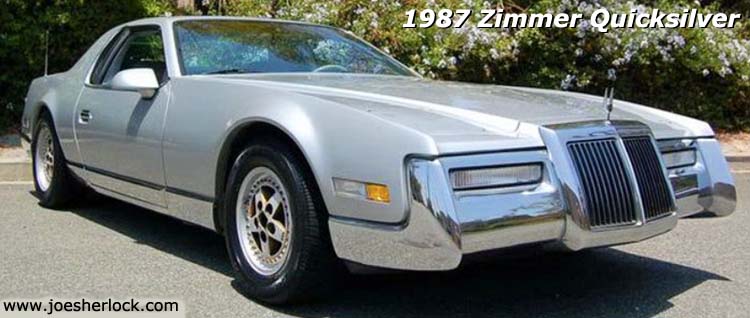
Interestingly, the car still turns heads. "Not once in fourteen total fuel stops did a bystander correctly identify the car. But neither did I ever hear a negative comment. The Zimmer generates affection out of thin air.
An elderly man in Amarillo called it "the best-looking car I've ever seen." A young black guy in an Escalade almost hit a Shell pump in reverse trying to get a better look and start a conversation about the Quicksilver; he pronounced it "lit." A group of heavily-tattooed twenty-something girls spilled out of a van outside a rest stop near Needles, California to drape themselves all over the long hood and take Instagram selfies.
On a side street of a Houston suburb, two muscled young men who claimed to be intimate acquaintances of the legendary rapper 'Willie D' estimated the current value of the car at "one hundred Gs, one-twenty-five if you put pokes on it. It'll gitcha the looks," I was assured, "that a Phantom can't. A Range Rover is played next to this.""
Zimmer, described as a "manufacturer of neo-classic automobiles," produced about 170 examples of the Quicksilver between 1984 and 1988. I still like the looks of this rare but overdone Fiero. (posted 12/28/16, permalink)
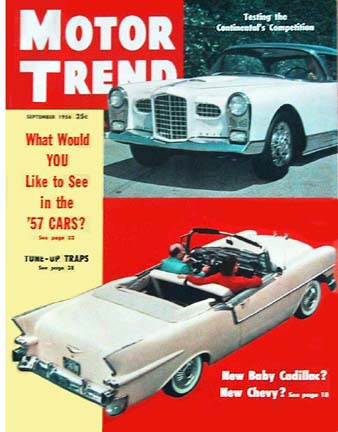 Electrifying: The Chevy Bolt EV has been chosen as the 2017 Motor Trend Car of the Year. As always, there were other finalists but GM coughed up the most bribe money, I guess. Electrifying: The Chevy Bolt EV has been chosen as the 2017 Motor Trend Car of the Year. As always, there were other finalists but GM coughed up the most bribe money, I guess.
Motor Trend magazine proclaimed that "the Bolt EV is the first conceived from the get-go by GM to be a viable, affordable mass-market electric vehicle." The magazine called it "a game changer," noting that "with 238 miles of range and an effective price of $29,995 (after the federal $7,500 tax credit is factored in), the Bolt EV has made just about every other electric vehicle on sale obsolete."
Are you excited? Me neither. This award used to get me somewhat roused until I read a revealing article by Peter De Lorenzo, which detailed how this 'award' is "for sale" to the manufacturer that showers Motor Trend with the most ad/promo money.
Peter wrote, "It's not about the "best" car. It has never been about the "best" car. It's about what car company will come up with the best media spending package that suits their interest in selling cars and that suits Motor Trend's interest in selling magazines and making money."
The COTY has been awarded to some awful vehicles, including the meretricious and underpowered PT Cruiser (2001), the unloved Renault Alliance in 1983 and the deplorable Chevrolet Citation - one of General Motors' X-body horrors - in 1980.
In 1976, the twin rattletraps known as the Dodge Aspen and Plymouth Volare shared the prize. Since most of them rusted away and/or fell apart, they are now seen less often than a Higgs boson particle.
There's no reason to believe that the Dolt ... errrr ... ummmm ... Bolt will be acquire a different reputation than its predecessors. (posted 12/16/16, permalink)
Diluting The Brand: Aston Martin wants to become a "global lifestyle brand." In September 2016, "weeks after opening a flagship store in the Mayfair neighborhood of London showcasing branded handbags, caps and butter-soft leather jackets," Aston Martin has introduced the AM37, a 37-foot powerboat with a price tag of $1.4 million.
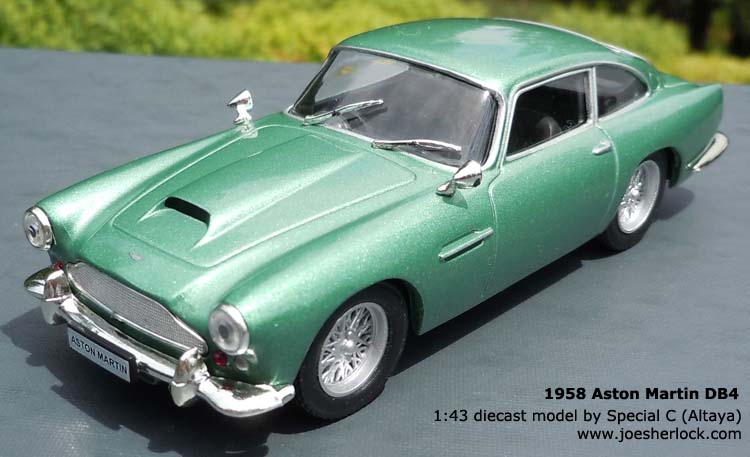
"Aston Martin has made 80,000 cars in its history ... with 90% still on the road; the number that Toyota would make in three days, given the Japanese giant's annual vehicle output of five million units." Therefore, it's understandable that Aston Martin is looking for new revenue sources but line extension can be a double-edged sword.
Back in the 1970s, Al Ries and Jack Trout wrote of the dangers of line extension in their excellent book, 'Positioning: The Battle For Your Mind'. Over the long term, line extension waters down the brand. It damages the primary, frequently without any profit benefit from the extension.
Did Cadillac make any money from that bicycle introduced 10 years ago? I doubt it. Is Land Rover making any money from its brand of coffee? Will all the variations on the Mini eventually kill the brand? When first introduced, Mini was a gotta-have little one body-style, two-door car with long waiting lists and price-gouging. Today, with a plethora of confusing offerings, Mini now struggles to sell a little over 4,000 vehicles per month; 2016 sales are down almost 12% so far this year. Porsche sells more vehicles than Mini at thrice the price.
Over the years, most 'regular' beer brands saw sales of their primary product hurt by light beer and other line-extending variants. Today, most old-name beers have seen their sales supplanted by craft beers, in part due to customer confusion from all those line extensions. The number of U.S. breweries reached an all-time record high of 5,005 in 2016; 99% are small, independent craft beer makers with laser-focused market offerings.
Best of luck, Aston Martin. I hope I don't see your badging on overpriced toenail clippers or nose-hair trimmers anytime soon. Or, as a label on expensive beer. (posted 12/14/16, permalink)
Rising From The Grave: Defunct auto-brand Borgward has been resurrected by a Chinese firm, state-owned Chinese truckmaker Beiqi Foton.
Borgward will begin German assembly of an electric BX7 SUV in 2018, from knock-down kits imported from China. The production target is 10,000 vehicles per year.
Founded in the 1920s, the original Borgward firm collapsed in 1961 after building about 1.2 million Borgward, Lloyd, and Goliath vehicles in Bremen, beginning in 1920.
Borgward was once the second-largest automaker in Germany - the brainchild of Carl Fredrich Wilhelm Borgward. Carl was quite the inventor but, as a manufacturer, he was easily distracted, producing overlapping lines of cars as well as electric buses, helicopters and race cars. The company found initial success in the 1920s, making a line of gasoline-powered delivery carts. The Borgward group eventually produced four brands - a pretty full range - of cars: Borgward, Hansa, Goliath and Lloyd. Parts interchangeability between various makes was almost nonexistent, increasing both tooling and production costs for the firm.
While Borgward pioneered technical innovations, such as air suspension and automatic transmission, it struggled to compete with larger, better-funded rivals such as Opel and Volkswagen. Herr Borgward's confusing management style, described as "pitting one assistant against another," didn't help things.
Borgwards arrived in the U.S. in the 1950s, represented by the typical chaotic independent importer structure of those days. Distribution and service were disorganized. Despite having some interesting offerings, the brand never made a dent in America.
The father of one of my high school classmates, Jim McEvilly, had a black two-door model. The doctor's car caught my attention because it was the only Borgward within a 10-mile area. Maybe more.
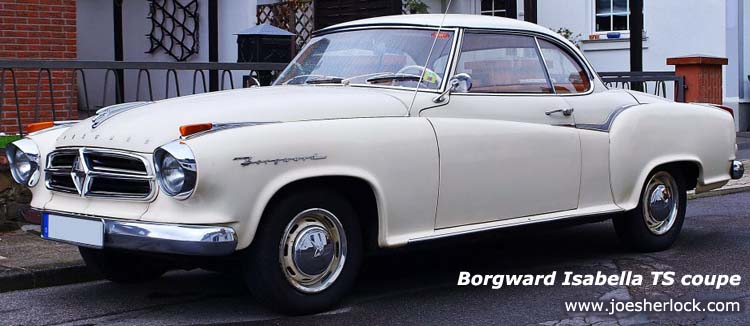
During my summer caddying days, I once hauled clubs for a man who owned an Borgward Isabella TS coupe, a decent-looking little car which reminded me of the Volkswagen Karmann Ghia. The TS cost $3,800 - quite a jump over the $2,600 K-G. But it did have a hopped-up 82 horsepower motor. The fellow I caddied for made a big deal about the TS, claiming that it was "the best-built car in Europe and cost more than a new high-end Cadillac." Yeah, right. I've often been puzzled about the kind of mental imbalance that compels an adult male to brag and lie just to impress a lowly, teenage golf caddy. Perhaps he was Baron Von Münchhausen in disguise.
In other German-related news, if Texas were its own country, its manufacturing output would exceed Germany. (posted 11/11/16, permalink)
When Buicks Were Cool:
How Plymouth Got Its Name: Plymouth Owners Club historian and author Jim Benjaminson has written a very informative article about the early days of the Plymouth automobile, which was published in the most recent issue of Collectible Automobile. (My copy arrived in late September, although it is dated 'December 2016'.)
Jim wrote about dealer sales promotion efforts when the first Plymouths rolled off the assembly line in June, 1928, with 'Mayflower' ship emblems and press release references to William Bradford and his band of Pilgrims, who landed at Plymouth Rock and founded Plymouth Colony in Massachusetts in 1820. "Playing on the Pilgrim theme, dealers were urged to dress in Pilgrim costumes, complete with buckle-adorned hats and blunderbuss guns, all supplied from the factory."
Adorning the showrooms was a 19-inch high wooden model of the Mayflower ship, complete with full rigging. Billed as 'the appropriate decorative piece on the show room table for the Plymouth dealer', the $4.75 model could also be “an attractive article for use as a prize." The price of the ship model in today's dollars comes out to $68 or so.
Interestingly, the Plymouth automobile's name wasn't really inspired by Pilgrims. Benjaminson related the true story, as told by fellow auto historian, Richard M. Langworth: "'What we want is a popular name, something people will instantly recognize,' Chrysler is quoted as saying. Joseph Frazer (later of Kaiser-Frazer fame), his general sales manager came back with, 'Well, boss, why not call it the Plymouth? That's a good old American name!' When the other executives questioned the name, Frazer continued, 'ever hear of Plymouth Binder Twine?' The salty-tongued Chrysler chimed in 'Hell, every goddamn farmer in America's heard of that!' And that's how the Plymouth name came to be."
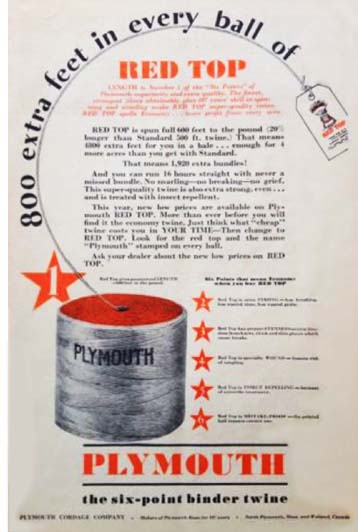
Plymouth Binder Twine was manufactured by the Plymouth Cordage Company of Plymouth Massachusetts. The firm was founded in 1824 and was once the largest manufacturer of rope and twine in the world. The company closed in 1964. (posted 10/14/16, permalink)
Heart Flutter, Hype & Whitewash: Once upon a time, Fall would make the automotive part of my heart go pitter-patter. (Now I take pills to prevent any unusual heart activity.)
There would be renderings and grainy photos of soon-to-be-released vehicles in car mags, followed by covert activities at local auto dealerships. Every year, before the new models came out, dealers moved new cars into their showrooms in the dark of night and whitewashed all the big plate glass windows so people couldn't see in. The public got curious and excited. Prospective buyers and old customers were invited to preview parties hosted by the dealership.
There would be champagne, balloons, clowns and/or piano players to entertain. The service bays were scrubbed spotless and full of shiny new automobiles. People got caught up in the excitement and bought cars.
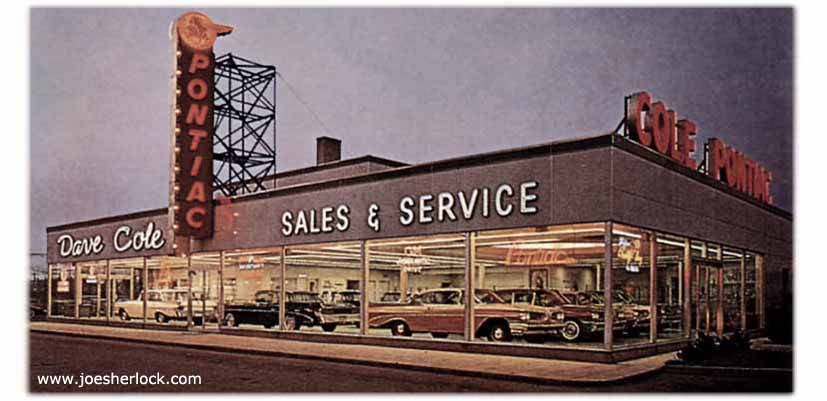
When you took delivery of your gleaming new vehicle, you were introduced to the service manager, who presented you with his card and gave you a personal tour of the parts and service departments.
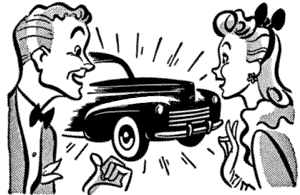 In those days, cars really looked new and different each year. Your neighbors would be properly envious of your freshly-manufactured automobile, which looked nothing like last year's model. Cars in showrooms looked great with glittering chrome and whitewall tires. (All the cheap stripper cars with no chrome and blackwalls were parked out back near the Dumpster.) Today, showrooms are full of cars with no chrome and blackwall tires. These vehicles aren't cheap but they sure look it. In those days, cars really looked new and different each year. Your neighbors would be properly envious of your freshly-manufactured automobile, which looked nothing like last year's model. Cars in showrooms looked great with glittering chrome and whitewall tires. (All the cheap stripper cars with no chrome and blackwalls were parked out back near the Dumpster.) Today, showrooms are full of cars with no chrome and blackwall tires. These vehicles aren't cheap but they sure look it.
Surprise, secrecy and excitement used to sell a lot of cars. These days, the surprise is gone. There seems to be a three-year "unveiling" of new models beginning with something called a 'concept' dragged around to various auto shows. By the time the production model finally appears, buyer boredom has set in after eons of hype and overexposure.
No secrecy; no excitement.
With the 2017 model year now upon us, I find little to increase my heart rate. And I haven't seen whitewashed windows or balloons at any dealership. (posted 10/10/16, permalink)
Colorized Beauty: The Old Motor showcased a few images of vintage automobile photos colorized by talented artist Patty Allison of Imbued with Hues. Patty is an expert photo restorer, who enjoys images that include cars and trucks and she spends the time to find the original color combos and hues that were available at the time that these vehicles were produced.
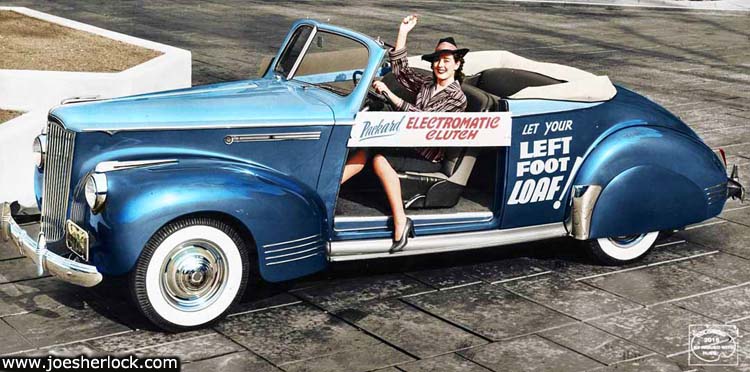
This image is "a two-tone blue 1941 Packard convertible coupe promotional car and a model extolling the virtues on the new 'Electromatic Clutch'. The optional equipment, like that also produced by other automakers at the time, was a combination of electrical and vacuum assisted components that eliminated the need to operate the clutch pedal." Packard announced that it "works on a new principle, free from the defects of earlier devices."
Patty also colorized a b&w photo of a '39 Plymouth, which I've posted here. (posted 9/12/16, permalink)
2016 Monterey Week: Last week's annual car fest offered the usual mix of spectacular and fascinating vehicles on display as well as always-interesting auto auction results. Once simply the Pebble Beach Concours, this car-centric, scenic venue has been expanded to include week long events, including new car reveals by manufacturers as well as debuts of endless Special Editions of current production models which are getting stale.
Monterey Week includes road rallies, races, auctions, displays, seminars, art exhibitions and parties. And mega traffic jams, as people try to attend every event and cram in every activity. This year's Tour d'Elegance found Sir Stirling Moss riding in a vintage 300SL roadster. It's good to know that the legendary Mr. Moss is still alive and well.
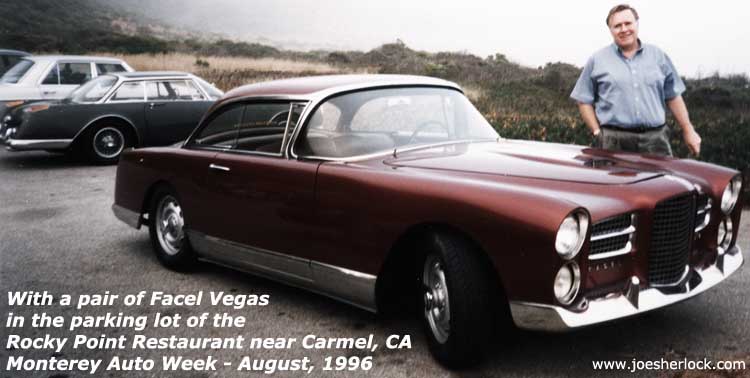
The week can be exhausting, even for a hard-core car enthusiast. I know. I traveled there twenty years ago, when things were far less hectic with fewer people in attendance and not as many venues. And I was younger and more energetic in 1996. I still have my Pebble Beach Miracle Hat, purchased at the Concours event. In my lifetime, I've been to hundreds of automotive events and nothing ever compared to Monterey.
I recommend that every car enthusiast do Monterey Week at least once in his/her lifetime. It's Pamplona for those who are interested in powerful, snorting creatures of a mechanical nature. With wheels rather than hooves.
The area's convention bureau expects almost 90,000 visitors, who will drop $50-60 million on hotel rooms, restaurants and bar tabs. The locals whine but they like the trickle-down effect of all that money, so they smile, make nice and mutter under their breath when no one is listening.
Last year, $396 million was spent at the many vehicle collector auctions - a new record. Experts expect this year's totals to drop 7%-12%. Median sale prices dropped slightly. Overall, the sell-through rate for cars priced above $100,000 was the lowest in Monterey since 2000, dropping to 57% this year from 72% in 2015. C2 Corvettes recorded subpar prices, as have Mercedes-Benz 280SLs. Conversely, Ferrari Testarossas and Maserati 3500GTs all realized strong prices relative to their conditions. As usual, the auction results were eye-opening:
• A 1955 Jaguar D-Type race car, a winner at the 1956 24 Hours of Le Mans international competition - still wearing its traditional Scottish blue paint with a white cross of team Ecurie Ecosse, was sold at an RM Sotheby's event for $21.78 million to become the most expensive British automobile ever sold at public auction.
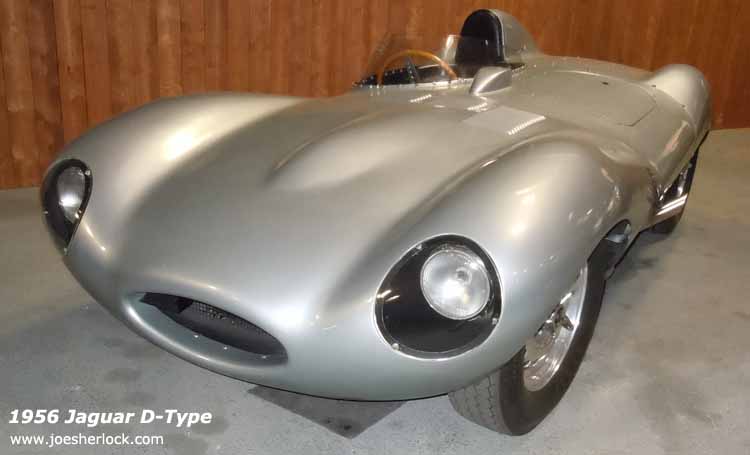
• The very first Shelby Cobra - a blue one - was sold for $13.75 million - a new auction record for an American car.
• Bonhams sold a 1931 Bugatti Type 51 Grand Prix Roadster for $4 million.
• A 1939 Alfa Romeo 8C 2900B Lungo Touring Spider, sold for $19.8 million at RM Sotheby's.
• A handsome silver blue 1954 Bentley R-type Continental Fastback Sports Sedan fetched $1,870,000 at RM Sotheby's auction. Bentley built only 207 Continentals; most were bodied by coachbuilder H. J. Mulliner. I've always liked the looks of '50s era Bentley Continentals and have a 1:43 scale example of one in my model car collection.
• At Gooding & Co., the gavel came down on an alloy-bodied, long-wheelbase 1959 Ferrari 250 GT California at $18.1 million and a 1960 Ferrari 250 GT SWB Competizione Coupe at $13.5 million.
Mecum Auctions was televised. I watched all of it and the following vehicles caught my interest:
• A freshly-restored, cream-colored 1933 Duesenberg Model J convertible coupe did not sell at a high bid of $3.6 million. This beautiful car, one of only six Model J long-wheelbase convertible coupes made - featured Bohman and Schwartz coachwork with disappearing-top.
• A cream-colored 1935 Auburn 851 supercharged boattail speedster with a deep red leather interior, failed to find a buyer with a high bid of $525,000.
• A black 1939 Brough Superior 11-50 motorcycle with sidecar sold for $160,000. In the 1930s, British motorcycle manufacturer, Brough Superior Co., offered the most expensive motorcycles in the world. Brough Superior produced a little more than 3,000 motorcycles between 1920 and 1940, and about 10% of these were 11-50s built from 1933-40, making it one of their most popular models. This rare motorcycle was expected to sell for over $275,000. This one had an 1100 cc V-twin engine with four-speed transmission.
• A fully-restored, silver 1966 Ford GT40, the first street legal, road version example of the famous racing car delivered to North America fetched a whopping $4.4 million. This example was right hand drive and had a leather interior as well as air conditioning.
• A gorgeous silver-blue 1967 E-Type roadster crossed the auction block at $220,000.
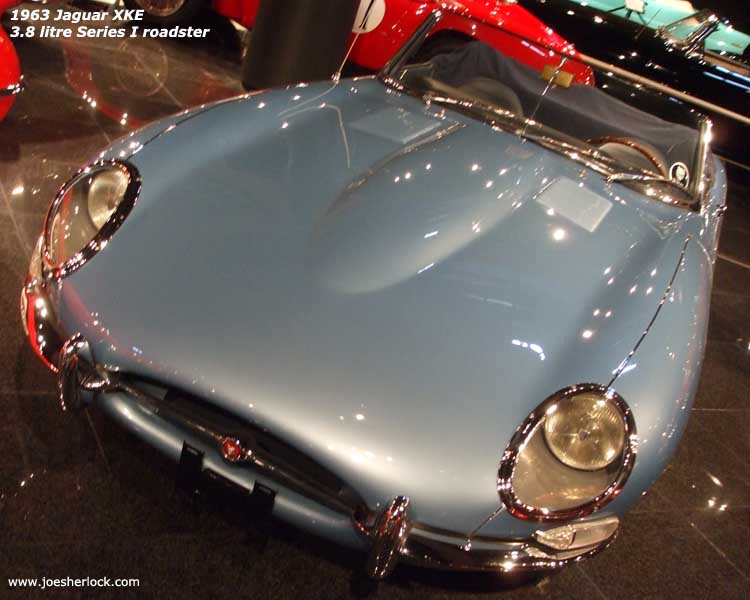
Older Jags are masterpieces of style. I think everyone should have a Jaguar at least once in their lives.
• A red 1968 Lamborghini Miura P400 sold for a mere $790,000. Last year, a fetching orange 1967 Lamborghini Miura P400 went under Bonhams' gavel at $1,039,600, while Mecum Auctions sold an orange 1969 Miura P400 S for $2.3 million.
I remember the first time I saw a Miura roar by me on the Pennyslvania Turnpike in the early '70s. It was a lime-green head turner. A Miura still turns heads today; designer Marcello Gandini's sleek styling has withstood the test of time.
At Sunday's Pebble Beach Concours, the pinnacle and conclusion of the Monterey Week experience, Best of Show was awarded to a black 1936 Lancia Astura Pinin Farina Cabriolet owned by Richard Mattei of Paradise Valley, AZ. Mattei bought the car in 2009 and spent six years restoring the four-passenger convertible, which was once owned by rocker Eric Clapton.
Speaking of rockers, also worthy of mention was the newly-restored 1957 BMW 507 roadster which once belonged to Elvis Presley. It was publicly displayed for the first time at Pebble Beach this year.
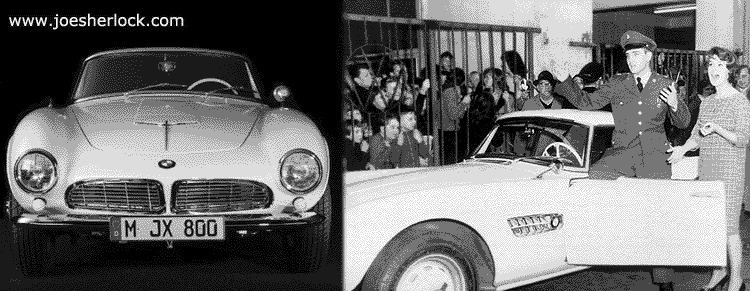
Elvis bought the car while in the U.S. Army and stationed in Germany. He used the BMW to drive between his home in Bad Nauheim and the US Army Base in Friedberg. (posted 8/22/16, permalink)
Popularity Contest: I spent quite a bit of time perusing the goodies for sale in the August issue of Hemmings Motor News. As usual there are pages and pages of popular collectible cars for sale - multiple pages each for Chevies, Corvettes, Fords, Mustangs, Thunderbirds, Ferraris, Porsches, Mercedes-Benzes, Bimmers, Rolls Royces and Volkswagens. There were hundreds of ads for each marque/model.
But I was surprised at the comparative number of ads for more obscure brands. There was a single listing for Geo: a Metro convertible with whitewalls, a new top and 167,000 miles on the odometer. It can be yours for $2,750, if you're a Geo Metro collector. The price seemed pretty high to me.
There was an ad for a cool-looking, one-of-a-kind, customized Continental Mark II that I saw 20 years ago in a northern California parking lot.
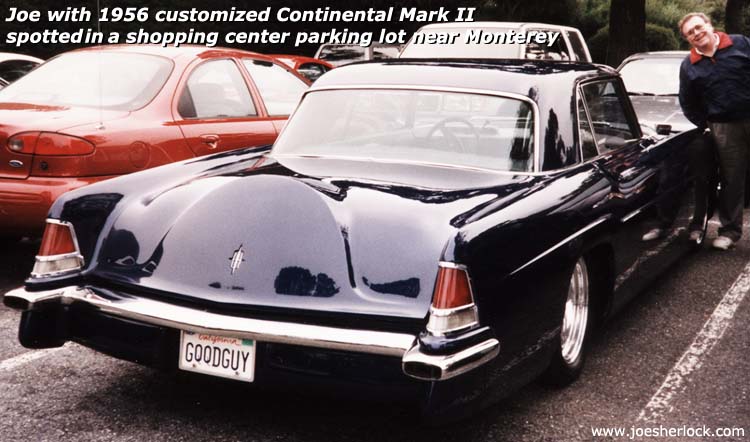
Offered for $69,500 and now located in Florida, this 1956 model was described as built "by Sam Foose ... featured in 'Custom Rodder' - March 1995, beautiful custom blue with gray leather interior, body disassembled and stripped with custom chassis." The engine is a 460 cubic-inch Lincoln V8 with competition Crane cam, Edelbrock carb, Mallory ignition, C-6 auto transmission with a B&M stall converter. The car has a custom exhaust system with Flowmasters.
There was also an ad for a 1991 Acura NSX with 16,700 miles for $75,000. When they first came out, I seriously considered buying an NSX. They were great cars and a bargain compared to mid-engined Ferarris and the like.
I found that there was absolutely no correlation between the number of cars manufactured by a particular brand and the number of cars for sale in Hemmings:
| Car Brand |
Number of Ads
|
|
Car Brand |
Number of Ads
|
| Acura |
1
|
|
DeLorean |
6
|
| Avanti |
4
|
|
DeSoto |
5
|
| Bricklin |
2
|
|
Edsel |
6
|
| Cisitalia |
2
|
|
Excalibur |
10
|
| Citroën |
11
|
|
Facel Vega |
3
|
| Cord |
7
|
|
Frazier |
1
|
| Crosley |
6
|
|
Geo |
1
|
| Delahaye |
1
|
|
Gogomobil |
1
|
| De Tomaso |
11
|
|
Hudson |
15
|
There were 45 ads for 1955-57 two-seater Ford Thunderbirds.
In any case, the magazine was a fun read and gave me a chance to dream about cars I'll never own. (posted 8/10/16, permalink)
Local Car Event: There was a little car show sponsored by and held at the Battle Ground Albertsons supermarket last Saturday. About 20 vehicles were on display - a mix of vintage iron and hot rods. I snapped a few photos:
|
|
This is one of 16,155 Ford Thunderbirds made during the 1955 model year - the car's first year of production. Originally priced at $2,944, the two-seater Ford rode on a 102-inch wheelbase and was powered by a 292 cubic-inch V8 engine.
|
|
|
This '32 Ford hot rod had a GMC blower mounted atop its V8 engine. The blower was driven off the crankshaft using a 3-inch wide Gates rubber timing belt.
|
|
|
The engine compartment remained closed, so I don't know what was powering this '32 Ford street rod. Nice paint job though.
|
Unfortunately, I wasn't able to take more photos because many exhibitors were sitting in lawn chairs in front of their machines, blocking the view. Oh well. (posted 8/4/16, permalink)
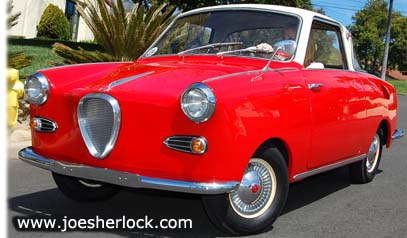 Small Wonder: Last week, I picked up the print edition of Hemmings Motor News. One of the most interesting ads was for a 1958 white over red Gogomobil TS coupe "formerly owned by CBS anchor Walter Cronkite," who raced at Lime Rock and elsewhere. Small Wonder: Last week, I picked up the print edition of Hemmings Motor News. One of the most interesting ads was for a 1958 white over red Gogomobil TS coupe "formerly owned by CBS anchor Walter Cronkite," who raced at Lime Rock and elsewhere.
Cronkite died in July, 2009 at age 92. In his prime, he also raced Volvos, driving a PV444.
The team campaigned and won races at Lime Rock's 'Little LeMans' in 1957, '58 and '61. Walter was the only finisher in a five-car team one year, taking a B-division win and placing third overall.
As for the Gogomobil, the 120-inch long microcars were sold from 1957 to '69. They were powered by a 2-cylinder, two-cycle, 18 horsepower rear-mounted engine and had a top speed of 55 mph. These Bavarian-built cars were a rare sight in America.
The TS coupes featured a prominent grille which looked like a cross between an Alfa and an Edsel. In 1959, a new TS was priced at $1,500. During the 1957-69 period, a total of 66,511 coupes were produced.
Walter's old race car is priced at $39,995, if you're interested. (posted 8/2/16, permalink)
Underdog Lives! Well, not quite. At the 2016 Forest Grove Concours, held on July 17th, a black 1964 Volkswagen Beetle with only 22 miles on the odometer was exhibited.
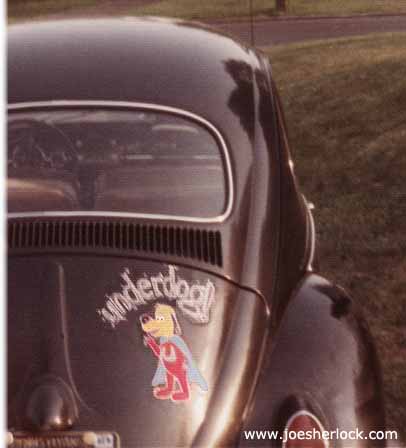 As someone who owned two black VW Beetles, a 1967 sedan that we kept for 28 years and the legendary Underdog, our '63 sedan, I was glad to learn that there's a pristine example of the genre nearby. As someone who owned two black VW Beetles, a 1967 sedan that we kept for 28 years and the legendary Underdog, our '63 sedan, I was glad to learn that there's a pristine example of the genre nearby.
"The car's long-term owner, mechanic Rudy Zvarich, purchased the Bug as a back-up for his daily driver of the day, a 1957 Volkswagen Beetle. Unhappy with the styling changes coming for the 1965 model year (mainly the Bug's larger windows and slightly curved windshield), Rudy purchased one of the last remaining 1964 Beetles from Vancouver, Washington dealer Gilbert and Seibel, intending to put the car on the road only after his 1957 Volkswagen was no longer repairable.
After starting his new car with a borrowed battery (to avoid activating the Volkswagen's fresh battery), Rudy drove the unregistered and uninsured car a few miles to a friend's garage, where it would remain parked for the next two years.
In 1966, Rudy completed a storage facility of his own, and drove the Volkswagen for just the second time to its new home. Drained of fluids and parked in a corner with a plastic dropcloth as a cover, the Beetle sat unused even as Rudy's car collection grew; by his reasoning, there was simply no reason to put the new Volkswagen on the road.
In 2014, Rudy died at the age 87, and his car collection passed to his nephew, Mike Burback, who also makes his living as a mechanic. Realizing just how special the Beetle was, Mike took great care to not impact the car's unique originality; its windshield wipers, for example, have never been installed and neither have the factory supplied wheel covers. The original window sticker remains in place, and even the dust-covered paint, now 62 years old, has never been washed or waxed."
Actually, the car was probably washed at the dealership at least once. Volkswagens of that era arrived with a protective coat of Cosmoline on all chromed parts to protect the surface during the ocean voyage across the Atlantic.
Over 300 cars were on display at the 2016 Forest Grove Concours d'Elegance. A black 1935 Mercedes-Benz 500K won best of show.(posted 7/25/16, permalink)
Be Careful Of Old Iron: Here's a great vintage postcard with a photo of late 1950s Portland, Oregon:
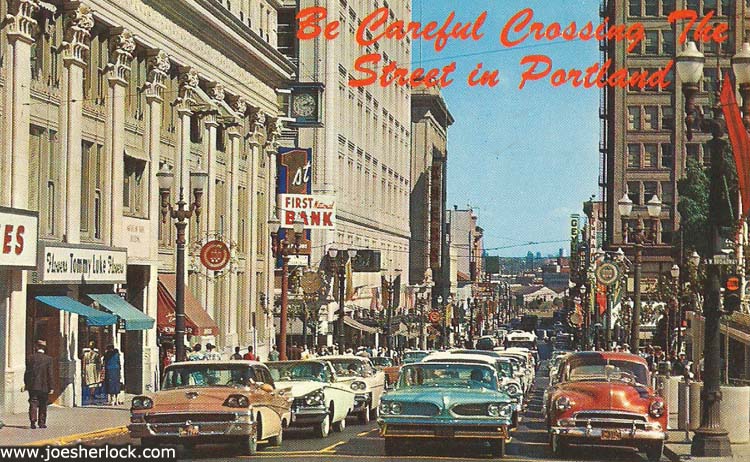
There are some interesting cars to be seen: at left is a brown and tan 1958 Ford Fairlane, behind it is a white 1959 Buick, behind the Buick is a 1957 light-colored DeSoto.
In the middle lane is a turquoise 1959 Pontiac with a '57 Ford peeking out somewhere behind the Pontiac. In the right lane is a mildly customized (nosed) 1951 Chevrolet.
My first visit to Portland didn't happen until 1971 or so; therefore, I can't identify the location of the photo, although Tommy Luke Flowers is still in business on 12th Avenue SW. A larger view can be seen here. (posted 7/13/16, permalink)
Speedy Arrow: Now almost forgotten, Pierce-Arrow was a well-engineered, luxury marque. It was the first vehicle to offer servo-assisted brakes.
In 1932, Pierce-Arrow introduced a 60-degree V12 engine of its own design. The engine offered some unique and interesting features, including the water pump which was "driven from the rear of the generator and position toward the middle of the engine so that the cool water could be evenly distributed throughout the engine. An oil cooler was mounted on the other side of the block to help heat the water when the Pierce was first started and to also balance oil and water temperatures," according to John C. Meyer III, writing in Automobile Quarterly (volume 24, number 4 - 1990).
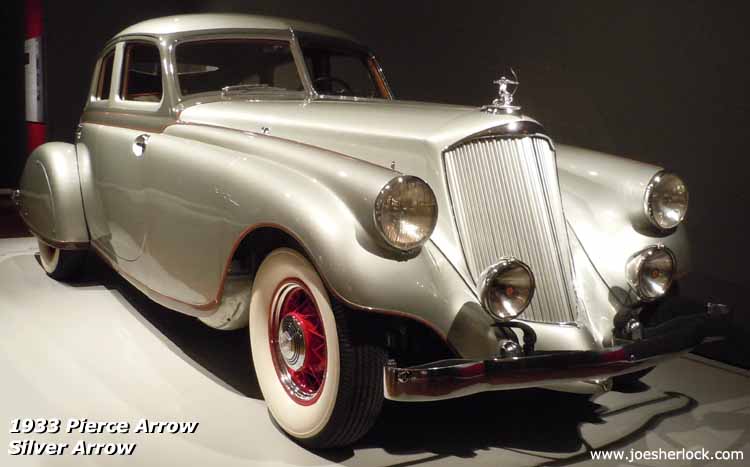
Under Ab Jenkins guidance in 1934, a V12 Pierce Arrow ran on the Bonneville Salt Flats and set "14 world unlimited records, 14 new international class records and 38 American class records."
The last Pierce-Arrow was produced in 1938. (posted 6/23/16, permalink)
Rare Sighting: From Stumptown Blogger comes a photo of a Council Crest streetcar at 5th and SW Washington in 1949 Portland, OR. What interested me was the light colored sedan on the lower right - it's either a rare 1936-37 Cord Westchester sedan or an even rarer '41 Graham Hollywood or Hupmobile Skylark.
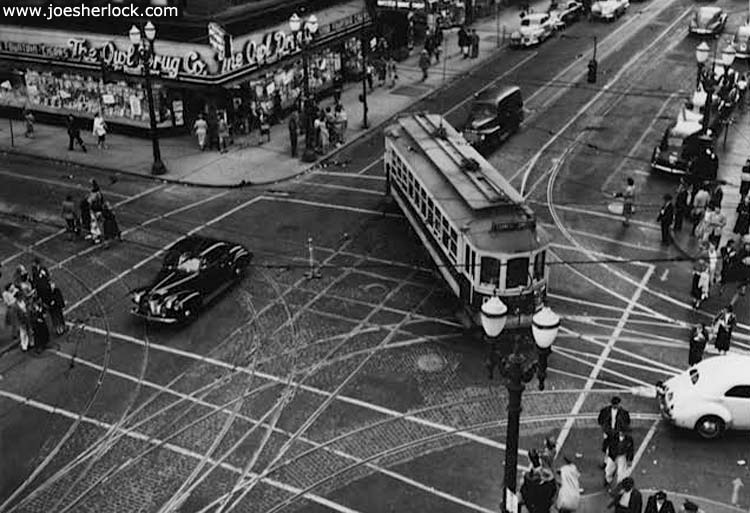
Teutonic Pickpockets: The Porsche Boxster appeared in 1996 as a mid-engined, two-seat sports car - a lower cost alternative to the Porsche 911 series. In that sense, it was kinda like the craptacular Porsche 914 of the 1970s. The Boxster was originally priced in the upper $30K range for the base model. As time went on, fancier editions appeared and prices went up. In 2006, a fastback coupe version, the Cayman, appeared.
The base Boxster now costs over $52,000 and it is easy to top $60k with basic options. Recently, MotorWeek tested a Cayman GT4, which had a ridiculous starting price of $85,595. Remember, that doesn't include the simplest of features - at Porsche, everything is optional. It is the German firm's policy to pick the buyer's pockets clean, leaving nothing but small bits of lint.
When Road & Track tested a 2004 Porsche 911 GT3 many years ago, it revealed the car's list price - $99,900, followed by its "price-as-tested" - $118,250, including $425 for aluminum doorsill trim (!), $175 for center caps with colored crests on the wheels and $115 for floor mats. Why floor mats aren't not standard on a $100,000 car is inexplicable.
As to proper doorsill trim pricing, I purchased nicely-finished aluminum doorsill protectors for my then-new 1967 Volkswagen Beetle from J.C. Whitney for less than seven bucks per pair. When I sold the car to a collector in 1995, the sill protectors still looked great. With the exception of my legendary 9¢ screwdriver, it was probably the best investment I ever made.
Peter De Lorenzo once wrote: "The creativity, time and effort Porsche used to spend on their street and racing cars is now being focused on making money - image, heritage and conscience be damned. SUVs with VW engines in them and grossly-inflated option prices are Porsche's new raison d'etre." Indeed.
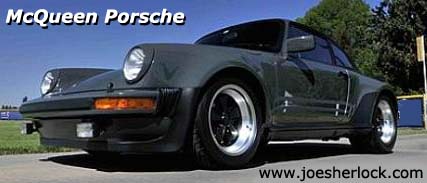 Even though I was an interested buyer with cash-in-hand, I've been hi-hatted by snobby Porsche dealers, so I'll never, never buy a Porsche. But I must admit that the original 911 design remains a milestone for purity of line. Even though I was an interested buyer with cash-in-hand, I've been hi-hatted by snobby Porsche dealers, so I'll never, never buy a Porsche. But I must admit that the original 911 design remains a milestone for purity of line.
As for the earlier 356 models, they were truly the embodiment of P.J. O'Rourke's "ass-engined Nazi slot car" description. They handled badly at limit and were quite prone to sudden oversteer - a primitive '30s design. There was a lot of Volkswagen DNA in those early Porsches yet they cost 2-3 times as much as a Beetle. I still think of them as glorified VWs.
I've always thought the best bet in those days was to buy a VW Karmann Ghia, slap a Judson supercharger on it, put an aftermarket transverse leaf in the rear to limit oversteer and create a Porsche-beating sleeper. Take the money you saved, put it in a good mutual fund and, ten years later, cash it out and then trade the K-G in for a really nice car.
These days, Porsche is more of a truck company - 62% of sales are SUVs. And the 911 models still outsell the Cayman/Boxster line by 45%. Porsche sells almost 50,000 vehicles in the U.S. each year, including the Panamera sedan, designed for prosperous geezers - 53% of Porsche Panamera buyers over 65. The Toyota Avalon is the designated Geezermobile in most automotive circles but its over 65 market share is almost identical to the Panamera. (posted 4/25/16, permalink)
 Consumer Reports' Annual Auto Issue: I always enjoy reading it. CR's database comes from 740,000 vehicles owned by subscribers who fill out Consumer Reports annual survey and is, in my opinion, the most comprehensive and believable of various reliability surveys. Owner satisfaction ratings come from 230,000 surveyed vehicles which are less than 3 years old. Consumer Reports' Annual Auto Issue: I always enjoy reading it. CR's database comes from 740,000 vehicles owned by subscribers who fill out Consumer Reports annual survey and is, in my opinion, the most comprehensive and believable of various reliability surveys. Owner satisfaction ratings come from 230,000 surveyed vehicles which are less than 3 years old.
Here are some interesting tidbits from the magazine:
• The highest road test scores were Tesla (100 points) and BMW M325i (98 points).
• The lowest road test scores were Jeep Wrangler (20 points) and Mitsubishi Mirage ES (29 points).
• The worst gas mileage among tested vehicles came from the Toyota Land Cruiser: 14 mpg.
• The best brands, based on a combination of road test scores and reliability scores, were Audi, Subaru and Lexus.
• The worst brands, based on a combination of road test scores and reliability scores, were Fiat, Jeep and Mitsubishi.
• Among luxury brands, Lexus has the best reliability, followed by Audi. Audi has made great progress; I remember the 1980s and '90s, when Audis were very trouble-prone. BMW has only average reliability, Acura, Infiniti, Mercedes-Benz and Tesla all scored worse than average.
• Buick models are far more reliable than Cadillacs. Buick upstages Caddy and road test performance as well.
• The Nissan Sentra managed to combine much worse than average reliability scores with much worse than average owner satisfaction scores.
• The $75,000 Maserati Ghibli is based on the Chrysler 300 platform, so it's basically a Maserati-powered Chrysler in the same vein as the Lee Iacocca-inspired 1990 Maserati TC. But, unlike the smooth riding Chrysler, the Ghibli offers a stiff, fatiguing ride. And: "Climbing in and out of this low-slung sports sedan can be a challenge." CR sniffed that "it's hard not to notice some cheap-looking switches, sourced from the Chrysler parts bins."
• Maserati will be selling a luxury SUV named the Levante later in 2016. It debuted at the recent Geneva Auto Show. It was originally to be called the Kubang until Jeremy Clarkson of 'Top Gear' quipped that it was named after "the noise it will make once the warranty expires."
• The Made-in-Mexico Lincoln MKZ sedan has a much better reliability rating (average) than the Made-in-Kentucky Lincoln MKC small crossover (much worse than average). It can't be the Kentucky work ethic; Toyota's Kentucky plant produces several high-quality, higly-rated vehicles, including the Camry, Avalon and Lexus ES350.
• Numerous models were awarded the dreaded solid black circle (much worse than average rating) for predicted reliability, including Acura RLX & TLX, both Alfa Romeo models, Cadillac ATS & Escalade, Chevrolet Colorado, Corvette, Silverado 1500, Suburban & Tahoe, Chrysler 200 & 300, Dodge Challenger, Charger, Dart & Journey, all Fiat models, Ford Fiesta, Focus & Mustang, GMC Canyon Sierra 1500, Yukon & Yukon XL, Hyundai Genesis coupe, Infiniti Q50 &Q60, Jeep Cherokee, Compass, Grand Cherokee & Renegade, all Land Rover models, Lincoln MKC, Mercedes-Benz C-Class CLA, GLS and S-Class, Nissan Pathfinder & Sentra, Ram 2500, as well as Volkswagen Beetle & Golf.
I put a lot of stock in Consumer Reports' car survey data analysis because I believe it presents generally unbiased information and has the largest experiential database. I recommend that you pick up a copy of the April issue for reference while it's still available. (posted 3/16/16, permalink)
Fleeting Fame: Well, I'm semi-famous again - in some specialized circles. I received an acknowledgement credit in a new book, 'Cord Corporation' by Rod Ward, published in the U.K. My contributions were images of a Graham Hollywood and a 1937 Cord 812 as well as background information on the Huppmobile Skylark.
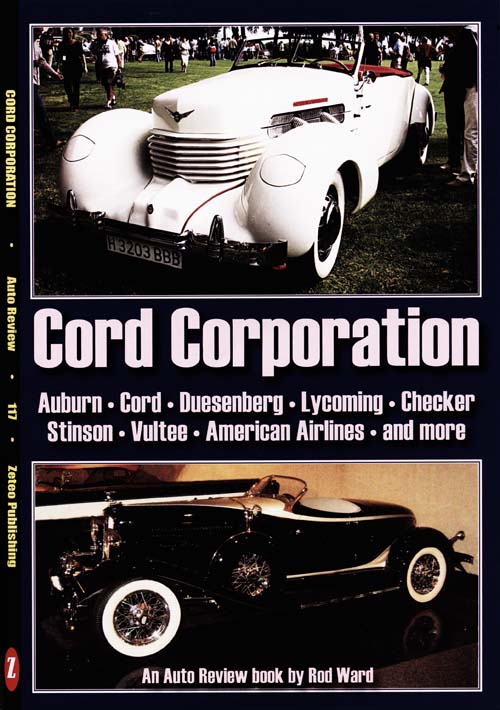
In addition to books I've authored and co-authored, I have contributed to numerous other books over the years - some about automobiles, others about business. (posted 3/9/16, permalink)
$25 Million Worth Of Ugly: The Tomahawk is a proposed electric supercar. Dubuc Motors Is trying to raise $25 million through crowdfunding to launch it.
It is truly a hideous-looking car and the paint job makes it look like something that Shamu the whale would drive. Maybe the vehicle should be called Orcamobile. Not to be confused with Oldsmobile. (posted 2/15/16, permalink)
Making It Clear: The German parts maker ZF exhibited a transparent acrylic vehicle at the Detroit Auto Show, complete with seats, a steering wheel, belt buckle and doors that open and close, to show the camera inset above the windshield and the radar system on the sides above the front bumpers – components of an autonomous ride.
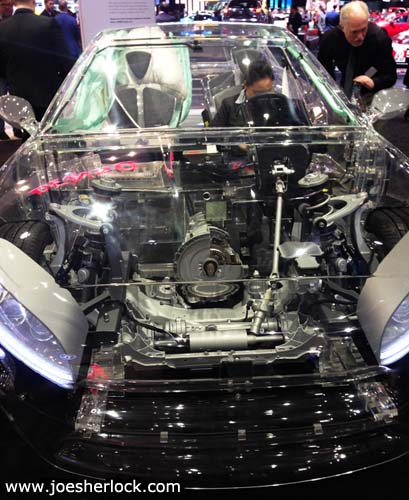
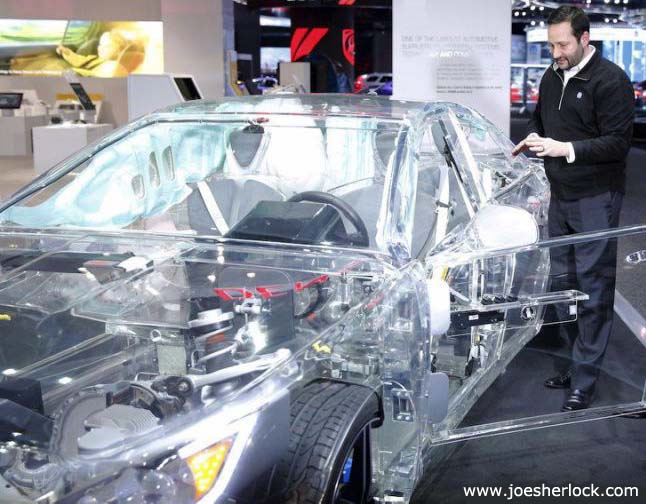
"ZF, based in Friedrichshafen, Germany, bought TRW Automotive a year ago, adding TRW’s air bags, seat belts, steering wheels, electronics and other products to its already hefty automotive product mix of suspension systems and transmissions." (posted 2/9/16, permalink)
Fresh Kill: After 13 years, Toyota is discontinuing its Scion brand. Toyota sold a total of 1,092,675 cars under the Scion marque from 2003 to the end of 2015. That's slightly more than 91,000 cars per year, spread over several models - probably not a profitable number for an economy line of cars. In 2015, Scion sold just over 56,000 cars - spread over five models. Consider that more than 360,000 Toyota Corollas were sold in 2015 as well as more than 429,000 Camrys.
Rolling boxes seemed to be a short-lived fad whose time in the sun is over. The Honda Element (which looked like it was styled by Rubbermaid) and weird-looking Nissan Cube are gone. The Kia Soul is the last of the proud containermobiles and, six years into its run here, it is doing better than ever, 2014 being a record year for the Soul. Inexplicably, it is perceived as offbeat but cool.
Starting with the 2017 model year, all surviving Scion models will be rebadged as Toyotas. I'm not surprised. Here are three reasons for the brand's demise:
1. Most of Scion's offerings were uninspired and the Gen Xers, at whom the brand was targeted, simply shrugged and said, "Whatever," although Toyota claimed that 50% of Scion buyers were under the age of 35. As with the Honda Element, another car targeted at young people, too many were being driven by gray-haired geezers. This didn't inspire those target young-uns to emulate grandma.
2. Scion was a no-haggle brand - the price on the window was what you paid. The problem was Toyota, whose models were on display a short distance away, were always "on sale," with seemingly endless annoying ads reminding buyers of that fact.
3. Barack Obama, at least according to Jack Baruth.
Initially, the tC coupe and xB box were winners but eventually people realized that the coupe was cramped and thirsty for such a little car. The xB was replaced with the much larger xD box which bombed. People who wanted a little box went to their local Kia dealer and bought a Soul. A few of the loonier ones went to a Nissan dealer and bought a Cube.
The Scion iQ was a dismal failure. Around these parts, Asian vehicles are king but, in all these years, I've only seen two iQs on the road. I've sighted three to four times as many Smart cars during the same period.
Scion joins Geo, Eagle and Merkur on the scrap heap of brands launched by segment-obsessed manufacturers who misread the market. (posted 2/5/16, permalink)
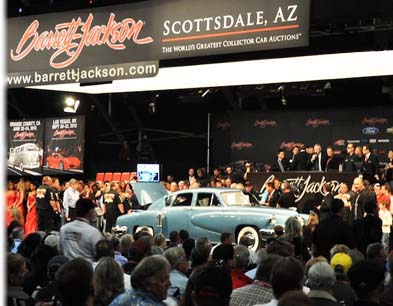 2016 Scottsdale Auctions: As usual, the various Arizona collector vehicle auctions were full of aging white dudes with buckets of cash bidding up car prices toward the stratosphere as they sought their automotive nirvana du jour. Or the nostalgia of their youth. 2016 Scottsdale Auctions: As usual, the various Arizona collector vehicle auctions were full of aging white dudes with buckets of cash bidding up car prices toward the stratosphere as they sought their automotive nirvana du jour. Or the nostalgia of their youth.
How old are these guys? Looking at the televised Barrett-Jackson events, I'd guess that the age of the average seat holder was 50-65. Hemmings Motor News used to claim that its average subscriber was 52 years-old. And that number didn't change much from decade to decade.
It makes sense: By one's early 50s, the kids are out of college and out of the house, the mortgage is shrinking (or paid off) and it's usually peak income time at work. This adds up to Disposable Income to spend on various toys.
It's impossible to cover the various auctions in their entirety, so here is a sampling of cars that I found interesting:
At Bonhams, the first production Kaiser Darrin - a white one with the signature Darrin dip style and, of course, sliding doors - crossed the block at $198,000. Only 435 Kaiser Darrins were made.
The same auction company sold a 1962 Mercedes-Benz 300SL Roadster for $1,485,000; a 1971 Ferrari 365 GTB/4 Daytona Berlinetta which went under the gavel for $1,155,000; a 1928 Mercedes-Benz 630K La Baule Transformable, which crossed the block at $973,500; a 1935 Hispano-Suiza K6 cabriolet, which sold for $869,000 and a 1965 Aston Martin DB5 sports saloon, which sold for $781,000.
Gooding & Co. sold a ... (more >>>)
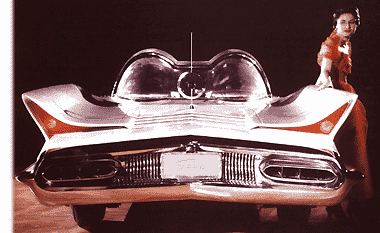 2016 Detroit Auto Show: At the precociously-named the North American International Auto Show, which everyone still calls the Detroit Auto Show, there were no truly wild concept vehicles. Nothing like the 1950s when Jetson-like vehicles, such as the Lincoln Futura, Ford F/X Atmos or GM's Firebird turbine car were the stunning stars to be rolled out at key auto shows across the land. 2016 Detroit Auto Show: At the precociously-named the North American International Auto Show, which everyone still calls the Detroit Auto Show, there were no truly wild concept vehicles. Nothing like the 1950s when Jetson-like vehicles, such as the Lincoln Futura, Ford F/X Atmos or GM's Firebird turbine car were the stunning stars to be rolled out at key auto shows across the land.
No bubble-topped, nuclear-powered, flying dream cars were unveiled this year.
Today, everything's about 'advanced connectivity'. I'm old enough to remember when connectivity involved testing TV vacuum tubes at the drug store.
• Acura unveiled a bulbous, yet knife-edged, long-hooded sports sedan (described as "intensely sculpted surfaces"), the Acura Precision Concept. Acura said the Precision Concept "literally will shape the direction of all future Acura products," bringing a "bolder, more distinctive future for Acura vehicle design." Well, good luck with that.
It looks like a Mazda6 on steroids, designed not with clay but with paper folded by an drunken origami artist. The Precision Concept has more creases than Willie Nelson's face.
• A Nissan Titan-based concept vehicle, the Titan Warrior concept pickup, is as aggressive looking as a Taliban assassin on crank. Nissan designers "gave the Titan pickup truck a tough-guy overhaul," said The Detroit Free Press.
• A red Volkswagen, designated as the Tiguan GTE Active Concept, is a unique plug-in hybrid crossover with alleged "sporty on-road and rugged off-road credentials." The 'hybrid' part is electric and gas. Shhhhh! No diesel. The word 'diesel' is not to be mentioned at the VW stand. Audi showed a bright yellow CUV concept - the H-Tron - powered by hydrogen, not diesel. Achtung! You vill nicht mention diesel.
• The Buick Avista coupe was probably the best-looking concept at the show. It really caught my eye.
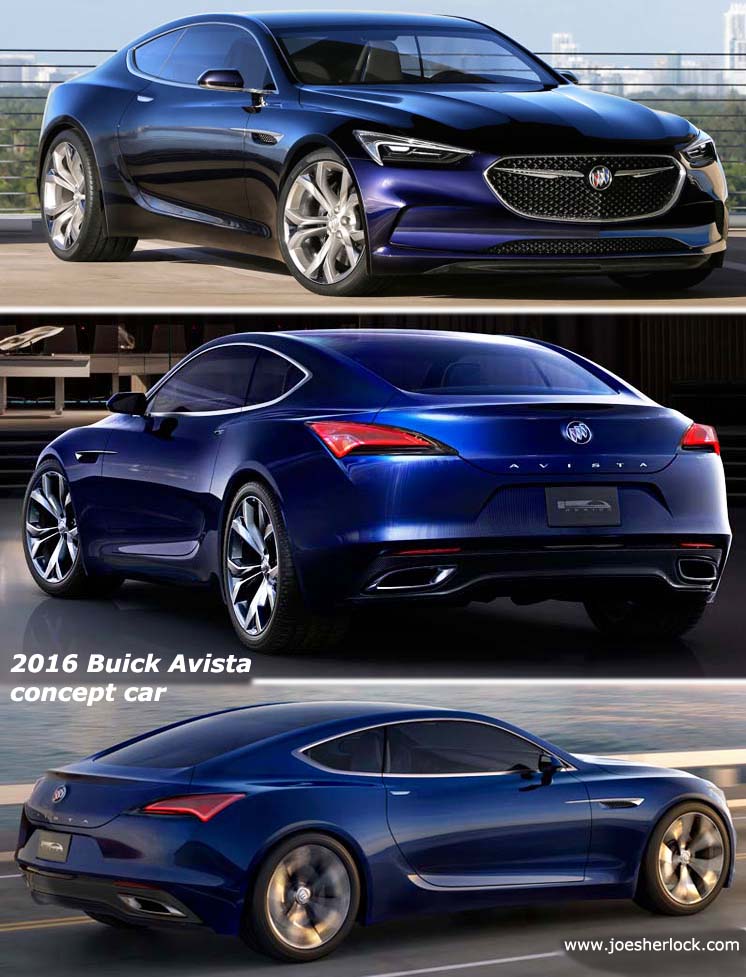
The 2+2 sports coupe has a twin-turbocharged V6 cranking out 400 horsepower through the rear wheels. Many of the design cues from Buick's last year's stunning four-door concept car, the Avenir.
The Avista is very sleek. My advice: rename it Riviera and put it in production.
There were some new model introductions that caught my interest:
• The 2017 Chevrolet Bolt all-electric CUV looked toned down from last year's concept model. The standard drive mode allows for 0-60 mph times of seven seconds flat.
"The 60-kWh battery pack, warranted for eight years or a hundred thousand miles, is mounted flat below the passenger floor, with 288 cells measuring less than four inches tall each. GM claims overnight charging will result in 200 miles of range, with 50 miles available after two hours on a 240V charger."
• The 2017 Chrysler Pacifica is a new, Canadian-built minivan. The successor to the Town & Country - that venerable name has been dropped. It has more of a nose/hood than its predecessor and is not as tall. But it still has minivan sliding doors. The Dodge version of the minivan (Grand Caravan) has been dropped.
The Pacifica Hybrid is the first-ever hybrid minivan. It's a plug-in, too. The extra jolt of electric propulsion lets Chrysler estimate this hauler can get a very green 80 miles per gallon equivalent, with 30 miles of full electric range.
• The restyled 2017 Ford Fusion is available with AWD and a 325 horsepower engine in the Sport model. The Fusion is Ford's best-selling car, and it moved 300,170 units in 2015. The new model goes on sale this summer.
• The 2017 Honda Ridgeline mid-size pickup looks more conventional than its predecessor and is available with AWD. "With a dual-action rear tailgate; a built-in, drainable, water-tight in-bed trunk; and the industry's very first in-bed stereo, Honda has built a vehicle that's better suited for keg hauling and barbecuing than rock crawling or towing."
• Hyundai showed off its Genesis G90, the first-ever vehicle for the new Genesis brand will occupy the same position as the old Hyundai Equus at the top of the heap. Styling was disappointingly conservative. The former Hyundai Genesis will be rebadged as the Genesis G80.
• The Infiniti Q60 sport coupe is a refreshed and rebadged replacement for the G37. Yawn. Well ... it can be had with a 400 horsepower motor to keep you from yawning.
• 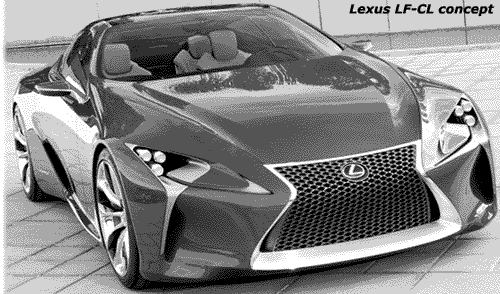 The 2017 Lexus LC 500 coupe, looking remarkably like the LF-CL concept coupe shown in 2012, is described as "the Future of Lexus." Too bad, because its main feature is that hideous face-only-a-mother-could-love grille which looks like a kitchen device for torturing vegetables and tubers. The 2017 Lexus LC 500 coupe, looking remarkably like the LF-CL concept coupe shown in 2012, is described as "the Future of Lexus." Too bad, because its main feature is that hideous face-only-a-mother-could-love grille which looks like a kitchen device for torturing vegetables and tubers.
As I've said before, "Open wide, George!"
It is powered by the familiar Lexus 467-horsepower, 5.0-liter V8. Pricing was not released but it's supposed to go on sale sometime in 2016.
• The 2017 Lincoln Continental sedan looks almost as good as the concept which debuted last year. The Connie has a 3.6-liter twin-turbo V6 with up to 400 horsepower and 400 pound-feet of torque. Inside, prospective buyers will discover heated, cooled, and massaging Perfect Position 30-way seats that adjust to shape and weight, as well as climate-controlled seats for rear passengers that also recline, and "generous rear legroom."
Lincoln will offer an optional twin-turbo, 400-horsepower V-6 engine not available on Ford models, the company said. The Continental also comes with safety technology such as pedestrian detection and pre-collision assistance that automatically brakes the car to avoid a crash.
Bloomberg News described this new Continental as "a broad-shoulder boulevard cruiser that draws on the brand's Rat Pack hip days of a half-century ago."
"The new Continental is meant to evoke the finger-snapping, laid-back cool of its 1961 forefather, known as the 'Kennedy Lincoln' because it was favored by President John F. Kennedy and celebrities such as Frank Sinatra and Marilyn Monroe." I don't remember the '61 Continental being a "finger-snapping" car during its heyday; it was simply a great-looking luxury car. And, most Rat Pack celebrities, such as Frank Sinatra and Peter Lawford, drove Dual-Ghias. Elvis Presley owned a cream-colored 1961 Lincoln Continental sedan. And Sinatra and Elvis both owned Continental Mark IIs.
"It's a nameplate that has a storied past and that means a lot," Ford CEO Mark Fields said. I hope Ford sells lots of Connies and brings the Lincoln nameplate back to life.
• Pricing for the BMW M2, high-performance coupe version of the entry-level 1-Series, begins at a whopping $52,695. Holy cow - that's Corvette territory.
• Henrik Fisker has signed on with Bob Lutz and Gilbert Villarreal to raise the old Fisker Karma from the dead and fit it with Corvette ZR1 power. It's called the VLF Destino and prices begin at $229,000. Fisker is also offering the Viper-based VLF Force 1 V10, with a new, more aggressive body and a souped-up engine at $268,500.
Jaguar/Land Rover, Bentley, Rolls-Royce, Maserati and others did not exhibit at NAIAS this year. Alfa Romeo, Cadillac, Dodge, Fiat, Jeep, Mazda, Mitsubishi, Ram, Scion, Subaru and Toyota had exhibit space but had no new models to show. (posted 1/13/16, permalink)
 2015 Auto Sales: In calendar year 2015, U.S. auto sales rose 5.7% to 17,470,659 vehicles. This is the best year for auto sales on record; topping 2000, when 17.35 million new vehicles found buyers. 2015 Auto Sales: In calendar year 2015, U.S. auto sales rose 5.7% to 17,470,659 vehicles. This is the best year for auto sales on record; topping 2000, when 17.35 million new vehicles found buyers.
General Motors' total sales for 2015 rose 5% year-over-year (3,082,366 cars & trucks) and retail sales were up 8%. GM is reducing rental deliveries and raising its commercial deliveries by design. Rental sales were down 11% and commercial sales were up 38%. Rental unit deliveries are expected to continue declining in 2016. For the year, total Cadillac sales rose 3% (175,267 units). Buick sales slid almost 3% for the year, while GMC sales increased 11%. Chevrolet brand sales were up 5% to 2,125,347 units.
For 2015, Ford and Lincoln sales totaled 2,603,082 vehicles, up 5% - the best annual sales performance in nine years. For the year, F-Series sales rose 4%, and the F-Series accounted for 31% of Ford brand sales. In 2015, Lincoln car sales were down 10% and utility sales were up 21% but overall the brand enjoyed a 7% increase to 101,227 units.
FCA/Chrysler group had a sales increase of 7% to 2,243,907 vehicles. Jeep sales were up 35% for the year to 865,028 units. Dodge sales were down 10% in 2015 to 517,153 vehicles in 2015. Chrysler brand sales were up slightly (5% - 324,846 cars). Despite the addition of new models, Fiat sales fell 8% to 42,410 units last year.
Toyota Motor reported sales of 2,499,313 vehicles, an increase of 5%, while American Honda reported sales of 1,586,551, a 3% increase. Nissan Motor Company's sales were up 7% and are approaching Honda in overall volume with 1,484,918 Nissans and Infinitis sold in 2015. Hyundai-Kia reported sales of 1,387,528 vehicles, an increase of over 6%.
Land Rover sales jumped 37% in 2016 to 70,582 vehicles. Volvo sales rose 24% in 2015 - 70,047 vehicles found buyers. Once left for dead, Mitsubishi sales increased by 23% to 95,342 units in 2015.
Subaru sales increased 13% to 582,675 cars and SUVs. Mazda sold 319,183 vehicles in 2015, an increase of 4% over 2014. Volkswagen sales were off 5% last year (349,440 vehicles); expect a bigger drop in 2016 due to the emissions scandal. Sales of Toyota's Scion brand fell 3% to 56,167 cars.
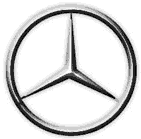 Mercedes-Benz sold 372,977 vehicles last year, an increase of 5%. Sales of BMW were up 2% to 346,023 cars and SUVs. Lexus sales increased by 10.7% to 344,601 vehicles. Lexus sold 7,165 LS sedans last year, a decline of 16%. Audi sold 202,202 vehicles, an increase of 11%, while 177,165 models of Acura found buyers last year, an increase of 6%. Despite its incomprehensible model nomenclature, Infiniti sales increased 14% in 2015 to 133,498 vehicles. Tesla's annual sales were estimated at 22,800 electric sedans, up 27% from 2014. Mercedes-Benz sold 372,977 vehicles last year, an increase of 5%. Sales of BMW were up 2% to 346,023 cars and SUVs. Lexus sales increased by 10.7% to 344,601 vehicles. Lexus sold 7,165 LS sedans last year, a decline of 16%. Audi sold 202,202 vehicles, an increase of 11%, while 177,165 models of Acura found buyers last year, an increase of 6%. Despite its incomprehensible model nomenclature, Infiniti sales increased 14% in 2015 to 133,498 vehicles. Tesla's annual sales were estimated at 22,800 electric sedans, up 27% from 2014.
Bentley sold 2,886 automobiles in the U.S. last year, an increase of 11%. Rolls Royce cars were purchased by 1,140 American buyers in 2015, an increase of 3%. Maserati sales dropped 10% in 2015 to 11,697 automobiles. Jaguar sales fell 8% to 14,466 cars.
Finally, Lamborghini sold 756 racy sports cars to American buyers, an increase of 3% over last year. (posted 1/6/16, permalink)
Earlier Car Musings can be found here.
Other Pages Of Interest
| blog: 'The View Through The Windshield' |
| greatest hits: various essays & articles | blog archives | '39 Plymouth | model train layout |
| about me | about the blog | e-mail |
copyright 2016-21 - Joseph M. Sherlock - All applicable rights reserved
Disclaimer
The facts presented on this website are based on my best guesses and my substantially faulty geezer memory. The opinions expressed herein are strictly those of the author and are protected by the U.S. Constitution. Probably.
Spelling, punctuation and syntax errors are cheerfully repaired when I find them; grudgingly fixed when you do.
If I have slandered any brands of automobiles, either expressly or inadvertently, they're most likely crap cars and deserve it. Automobile manufacturers should be aware that they always have the option of trying to change my mind by providing me with vehicles to test drive.
If I have slandered any people or corporations, either expressly or inadvertently, they should buy me strong drinks (and an expensive meal) and try to prove to me that they're not the jerks I've portrayed them to be. If you're buying, I'm willing to listen.
Don't be shy - try a bribe. It might help.
|
|